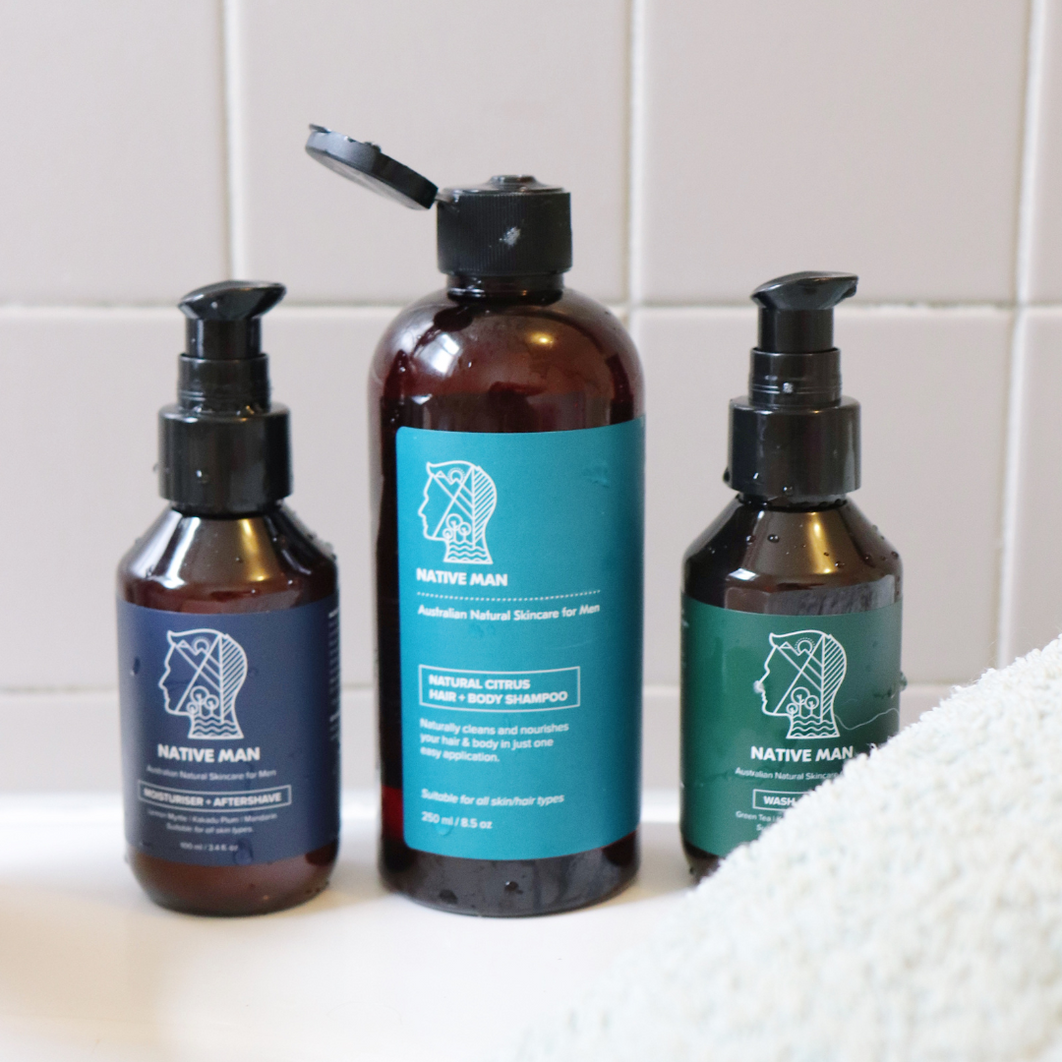Cedarwood Oil is a wonderful tonic for the nervous system, supporting you to move forward with confidence whilst releasing mental strain and stress. Also known for its use with respiratory problems, Cedarwood is a wonderful essential oil to have on hand during the winter months and flu season.
There are several cedarwood oils with different properties and chemical compositions. In this blog post we are going to focus on Atlas Cedarwood (Cedrus atlantica) from the pine family pinaceae. This is the variety we stock in our Zea Essentials Range.
About Atlas Cedarwood Oil
Cedarwood Oil - also known as cedar oil - was used by the ancient civilisations in medicine, cosmetics, and perfumery. The Egyptians, in particular, are known for their use of cedar oil in the embalming process.
The origins of Atlas Cedarwood are believed to link back to the famous Lebanon cedars, however these trees are now protected due to risk of extinction2. Nowadays, it is cultivated and sustainably harvested in Morocco and other parts of Europe. More information on sustainability is touched on below.
The wood itself is very aromatic, due to the high percentage of essential oil it contains, and was used for building and making storage chests, as the odour repels termites, ants, moths and other harmful insects1.
Cedarwood oil is a yellowish to orange-yellow or deep amber-coloured oil with a woody aroma, also popular to use as an incense due to its warm woody fragrance.
People often think of Cedarwood as a very strong scent, similar to “standing near the pencil sharpener” at school, but the scent from Cedarwood Atlas is softer and more relaxing and a safer option to use in the home and as part of aromatherapy practices.
Cedarwood is the essential oil to use when you want to help change negativity into positivity and move forward with courage and strength.
Sustainability Concerns
If you are looking to purchase Atlas Cedarwood essential oil, please ensure you are purchasing from a reputable supplier that is mindful and actively supports the sustainable harvesting of this popular species. The Cedrus atlantica tree is on the IUCN Red List of Threatened Species as endangered.
At Zea, we source Cedarwood Essential Oil from sustainable cedar plantation trees that are cultivated in Morocco.
Essential Oil Facts
Botanical Name: Cedrus atlantica
Common Name: Cedarwood, Moroccan Cedarwood, Atlantic Cedarwood, Cedar Oil
Family: Pinaceae
Extraction method: Steam distilled from the wood
Country of Origin: Morocco
Note: Middle-Base
Strength of Aroma: Medium - strong
Aromatic scent: Woody and balsamic
Typical chemical Composition: Sesquiterpenes (himachalenes 14.5%, α-himachalene 10%, β-himachalene 42%, cis-bisabolene 1.2%); sesquiterpene alcohols (himachalol 4%, allo-himachalol2.3%); ketones (α-atlantone 2.65%, γ-atlantone 5%); oxides (himachalene oxide 1%).7
Safety Information: Non-toxic, non-irritant and non-sensitising
5 Uses of Cedarwood Oil
Cedarwood is believed to be a sedative, antiseptic, astringent, an expectorant and good to help with feelings of anxiety, low self esteem and fear. Here are five uses for Cedarwood Oil that you might like to try.
1. Dandruff & Hair Loss
Cedarwood essential oil is thought to promote hair growth and reduce hair loss by balancing the oil-producing glands in the scalp. It also has antifungal and antibacterial properties, which can treat different conditions that may contribute to dandruff or hair loss.
Cedarwood has been used in an aromatherapy massage blend for the treatment of Alopecia areata - a disorder in which the hair falls out in patches producing baldness. Although the results were variable, the group using the massage blend containing Atlas Cedarwood showed a significant improvement3.
A few drops of Cedarwood added to a hair care blend or shampoo may improve scalp health and soothe itchiness or flaking commonly associated with conditions such as dandruff and hair loss.
DIY Hair Tonic: Add 2-4 drops of Cedarwood oil to a shampoo base or shampoo of choice. Massage into the scalp and leave for 10 minutes, before washing it out thoroughly.

2. Skincare
Cedarwood is often used in skincare products as a mild astringent and its antiseptic properties, and may help in alleviating acne, blemishes and breakouts.
Often used in men’s toiletries, Cedarwood is also a great alternative for DIY skincare products for those who prefer a more woodsy scent over the sweeter options1. It blends well with Kunzea when creating an aftershave or face moisturiser.
DIY Acne Face Treatment: Add 2-3 drops of Cedarwood Oil to 5 teaspoons of a non comedogenic carrier oil (such as Grapeseed or Hemp) and apply to acne prone skin for 20 minutes once a week. Alternatively dip a cotton ball in the Cedarwood and carrier oil mix and apply as a spot treatment for pimples and blackheads. Make sure to always do a patch test on a small area of skin before applying any oils.
3. Lymphatic Drainage and Cellulite
Cedarwood is reputed to encourage lymphatic drainage and stimulate the breakdown of accumulated fats. It is mildly diuretic and may be used for support with reducing cellulite and oedema4.
Clinical aromatherapist and author, Peter Holmes, recommends blending Atlas cedarwood with Grapefruit for an effective treatment of lymphatic congestion and swollen glands6.
DIY Body Scrub: Make your own body scrub to promote circulation and drainage. Combin one cup of Magnesium flakes or Zea Relief Kunzea Bath Salts with ½ cup of jojoba (or your preferred carrier oil) and 1-2 drops of Cedarwood oil. This will create a thick, easy-to-apply scrub that you can rub directly into the skin before getting in the shower. Let them sit on the skin for a few minutes, and then wash them off.
4. Calm the Mind
Studies have reported that Cedarwood has a calming and stabilising effect on the mind, making it a supportive oil in times of anxiety and stress2.
Because of its sedative and soothing properties, Cedarwood oil can be especially helpful to aid with sleep disturbances as a result of an overactive mind and inability to switch off at night. In his book Aromatica, Holmes states that Atlas Cedarwood Oil helps to calm the mind and promote emotional security whilst alleviating anxiety, fearfulness and agitation7.
A study on the sedative effects of Cedarwood suggests that it may help with occasional sleep disturbance and insomnia5. For this reason, our best selling Calming Lifestyle Blend includes Cedarwood blended with lavender, frankincense and ylang ylang. Try adding 2-3 drops to an aroma diffuser before bed.

5. Flea and Moth Deterrent
As far back as the Ancient Greeks, Cedarwood has been used to repel insects. Atlas Cedarwood, in particular, is a well known repellent used to stop moths, silverfish, and other pests from laying eggs in clothing stored in the wardrobe or other storage2.
Swap out chemical mothballs for home made solutions, such as making your own potpourri sachets with cedarwood chips, lavender, and a few drops of Cedarwood and Lavender oils to pop in clothes drawers. Or, alternatively, add a few drops of Cedarwood oil to wooden cedar balls to hang in the wardrobe or drawers.
Blending with Cedarwood
Cedarwood Oil blends well with Kunzea, Rosemary, Lavender, Nerolina, and Frankincense. It is an important ingredient in two of our Lifestyle Blends - Calming and Heaven Scent - and two of our Chakra Blends - Crown and Root.
Below are a few DIY diffuser blends you may like to try at home:

The Essence of Cedarwood
As a massage therapist, I love to use Cedarwood Essential Oil on those suffering emotionally or physically from unyielding or unhelpful thoughts, keeping them stuck in their ways.
Cedarwood is an oil that helps to calm the mind and ground the soul together, helping to renew the positivity needed to persevere and move forward with confidence.
About the Author - Michelle Brass ND
With over 25 years of experience in the natural health industry, Michelle has dedicated her life to helping others embrace the therapeutic benefits of nature. Throughout her time as a health practitioner, she has used and recommended countless traditional and conventional treatments to her clients - as she believes an integrative approach to health and wellness is very important. Michelle is passionate about using and promoting essential oils and, in particular, Kunzea Oil, as she has seen them help thousands of people over the years. She knows that using essential oils in your daily life can help bring balance to the mind, body and soul. She is constantly trialling and testing new products with her loyal clients.
To learn more about Michelle, go to her full bio page.
Medical Disclaimer
All content by Australian Kunzea Pty Ltd, including, text, images, audio, or other formats, were created for informational purposes only. The content is not intended to be a substitute for professional medical advice, diagnosis, or treatment. To read our full medical disclaimer, click here.
References
- Davis P. Aromatherapy An A-Z: The most comprehensive guide to aromatherapy ever published. Vermilion - Mass Market; 2005.
- Battaglia S. The Complete Guide To Aromatherapy. 3rd ed. Black Pepper Creative Pty Ltd; 2018.
- Hay IC, Jamieson M, Ormerod AD. Randomized trial of Aromatherapy - Successful Treatment Of Alopecia Areata. 1998.
- Mojay G. Aromatherapy for Healing the Spirit: Restoring Emotional and Mental Balance with Essential Oils. Healing Arts Press; 2000.
- Kagawa, D. Jokura, H. et al. The Sedative Effects And Mechanism Of Action Of Cedrol Inhalation With Behavioral Pharmacological Evaluation. https://pubmed.ncbi.nlm.nih.gov/12898420/ Accessed 27 October 2020.
- Holmes P. Aromatica: A Clinical Guide to Essential Oil Therapeutics. Volume 1: Principles and Profiles. Singing Dragon; 2016.
- Collins P. Cedarwood. The Aromatherapist, 1996; 3(2): 30-33.




